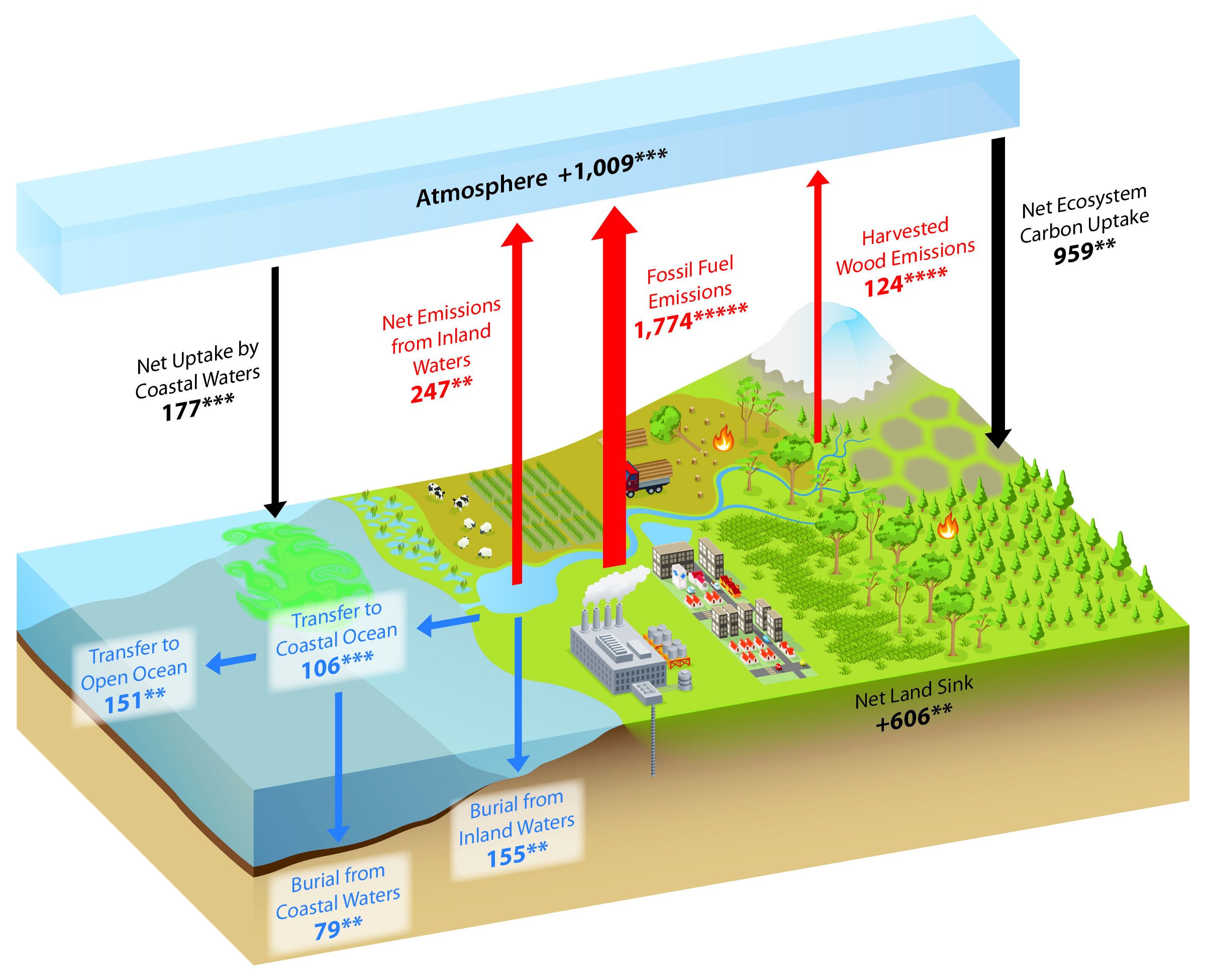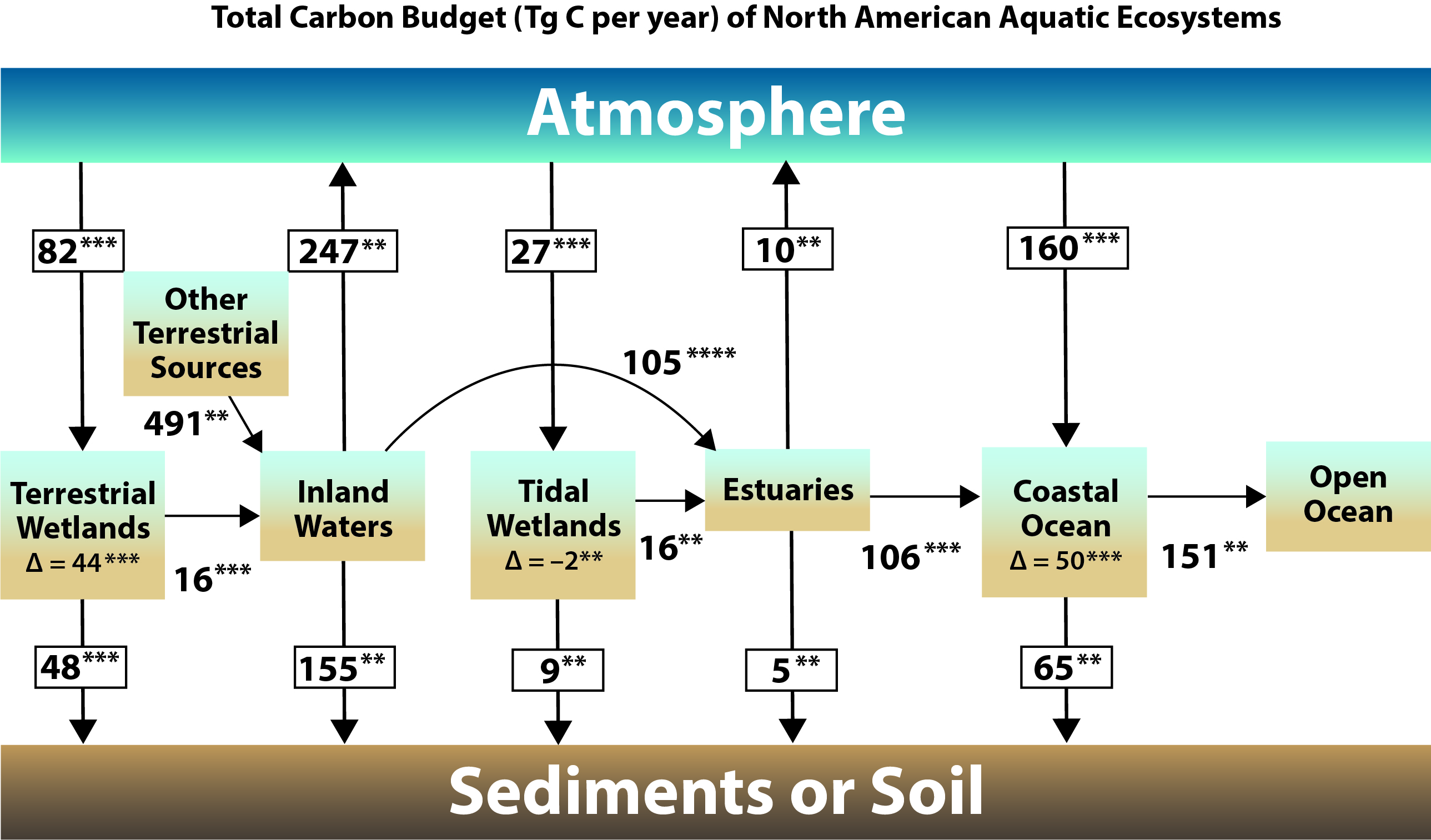Birdsey, R., M. A. Mayes, P. Romero-Lankao, R. G. Najjar, S. C. Reed, N. Cavallaro, G. Shrestha, D. J. Hayes, L. Lorenzoni, A. Marsh, K. Tedesco, T. Wirth, and Z. Zhu, 2018: Executive summary. In Second State of the Carbon Cycle Report (SOCCR2): A Sustained Assessment Report [Cavallaro, N., G. Shrestha, R. Birdsey, M.A. Mayes, R. G. Najjar, S. C. Reed, P. Romero-Lankao, and Z. Zhu (eds.)]. U.S. Global Change Research Program, Washington, DC, USA, pp. 21-40, https://doi.org/10.7930/SOCCR2.2018.ES.
Executive Summary
Carbon is the basis of life on Earth, forming bonds with oxygen, hydrogen, and nutrients to create the organic compounds that make up all living things. Essential for fundamental human activities and assets, carbon is a vital component of the fossil fuels used for energy production, cooking, agriculture, manufacturing, and transportation. The carbon cycle encompasses the physical, chemical, and biological processes that store or transfer carbon between different stocks or reservoirs (see Figure ES.2, p. 26). Examples of such reservoirs include the carbon stored as CO2 and CH4 gas in the atmosphere; as coal, petroleum, and natural gas (the primary energy sources for modern societies); and as organic and inorganic carbon in Earth’s ocean, freshwaters, forests, grasslands, and soils. Carbon transfer among these reservoirs occurs via a range of different processes, such as plant uptake of atmospheric CO2 for growth (photosynthesis), release of CO2 to the atmosphere from organic matter decomposition and combustion, and “lateral” transfers of carbon and burial within aqueous systems (see Figure ES.3 and Ch. 1: Overview of the Global Carbon Cycle).
Figure ES.2: Major Carbon Fluxes of North America

Figure ES.3: Total Carbon Budget of North American Aquatic Ecosystems

Carbon is also critical in regulating climate because carbon-containing GHGs3 absorb radiant energy emitted from Earth’s surface, thereby warming the planet. This warming creates a climate within the narrow range of conditions suitable for life. Changes in atmospheric concentrations of GHGs influence Earth’s ecosystems and society in many ways, both positive and negative. Consequences of increasing GHGs include impacts on air quality, human health, water quality and availability, ecosystem productivity, species distributions, biological diversity, ocean chemistry, sea level rise, and many other processes that determine human well-being. Thus, the carbon cycle is tightly coupled to the environment, society, and the global climate system.
See Full Chapter & References